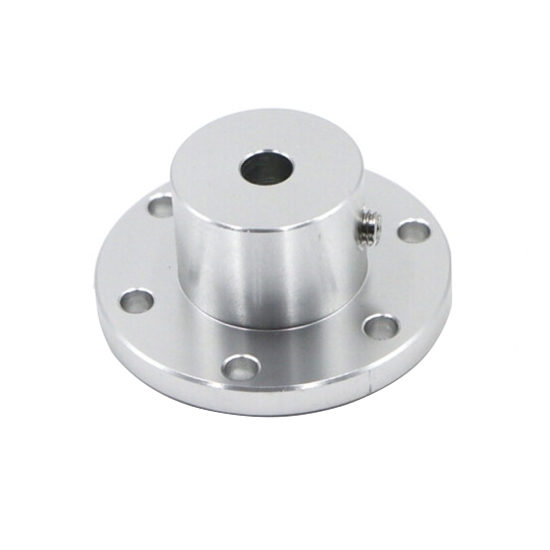
5mm Rigid Flange Shaft Coupling
from
$89.79
Ex Tax: $89.79
- Stock: In Stock
- Model: RDDLZ-FC-05
- Weight: 1.00
- SKU: RDDLZ-FC-05
Available Options
Create unlimited custom product blocks and display them in accordions or tabs or open blocks. Each block can be assigned to all products at once or specific products according to advanced criteria.
Create unlimited custom product blocks and display them in accordions or tabs or open blocks. Each block can be assigned to all products at once or specific products according to advanced criteria.
Motor guide shaft coupler for DIY parts, which has a 5mm bore size and features a precision machined bore and flange face to ensure smooth and efficient power transmission between shafts.
Specification
- Model: RDDLZ-RFC-05
- Inner Diameter: 5mm
- Treatment Process: Oxidation
- Processing Accuracy: ±0.05mm
- Tolerance: 0.05mm
- Weight: 77.5g
Features
- A rigid flange shaft coupling is a special coupling that fixes a shaft to a flat surface and allows easy mounting of other accessories on the shaft.
- The rigid flange shaft coupling is made of high quality aluminium alloy, which is hard and resistant to moisture and rust, and has a long service life.
- 5mm rigid flange coupling connector is suitable for connecting model shafts, perfect for RC model motors etc.
- The rigid flange coupling connector is relatively easy to install, thanks to its simple design and few moving parts.
Dimension (Unit mm)
Applications
A flange coupling is a type of mechanical joint that is used to connect two rotating shafts in order to transmit power. Flange couplings are commonly used in industrial machinery and equipment, such as pumps, compressors, and turbines. The field of application for flange couplings is wide-ranging and includes industries such as oil and gas, power generation, water treatment, and manufacturing.
Tips: How to install and maintain a flange coupling?
Installation:
- Inspect the coupling: Before installation, inspect the coupling to make sure it's free of damage, and that the bore and keyway are clean and clear.
- Check alignment: Make sure the equipment is properly aligned before installing the flange coupling.
- Attach the coupling halves: Slide the coupling halves onto the shafts, making sure that the keyway is aligned with the key on the shaft.
- Tighten bolts: Tighten the bolts in a cross pattern to ensure even pressure on the flanges. Use a torque wrench to tighten the bolts to the manufacturer's recommended torque.
- Check runout: Check the coupling for runout by using a dial indicator. If the runout is greater than the manufacturer's specifications, realign the equipment and recheck.
Maintenance:
- Regular inspection: Inspect the coupling regularly for signs of wear, cracks, or other damage. Replace any damaged parts immediately.
- Lubrication: Lubricate the coupling regularly using the recommended lubricant. Make sure to apply the lubricant evenly to all surfaces of the coupling.
- Check bolt tightness: Check the bolt tightness regularly and retighten as necessary to ensure even pressure on the flanges.
- Monitor alignment: Monitor the alignment of the equipment and coupling regularly. If there is any misalignment, correct it as soon as possible to prevent damage to the coupling and equipment.
- Replace worn parts: Replace any worn parts as soon as possible to prevent further damage to the coupling and equipment.
Builder in Product TAB
NEW! Since Journal 3.2, the much improved T.A.B (Tabs Accordion Blocks) system supports the page builder inside the tab content. Unlimited Blocks, Tabs or Accordions with any HTML content or the builder interface (supporting custom rows/columns/modules) can be assigned to any individual product or to certain groups of products, like entire categories, brands, products with specific options, attributes, price range, etc.
You can indicate any criteria via the advanced product assignment mechanism and only those products matching your criteria will display the modules.
Also, any module can be selectively activated per device (desktop/tablet/phone), customer login status and other criteria. Imagine the possibilities.
